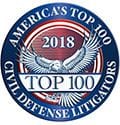Pharmacists play a unique role in the medical industry. While doctors may be responsible for diagnosing conditions and prescribing medications, pharmacists are responsible for mixing the medications in the dosage necessary to help the patient return to health. This is an important responsibility, and a misstep can lead to disaster. However, is a pharmacist’s error legally the same as medical practice?
Two cases of pharmacist malpractice
According to two recent cases from other states, pharmacist malpractice does not necessarily amount to medical malpractice.
In one case the plaintiff claimed the pharmacist breached the duty of “informed consent” because she was prescribed and received a drug that negatively interacted with a drug that she was already taking’ resulting in toxic effects. The pharmacy argued that informed consent only applied to doctors, not pharmacists. The judge in this case agreed and ruled in the pharmacy’s favor.
In the second case, the plaintiff claimed that the pharmacist breached the standard of care by, after examining the plaintiff’s profile, dispensing a drug that the patient had an allergy to. Ultimately the case was dismissed because the plaintiff could not provide the legally required expert testimony to prevail in their claim
Pharmacist malpractice is not necessarily medical malpractice
Pharmacists dispense medications, but they do not prescribe them or evaluate patients. Their role is different from that of doctors. Therefore, the elements of a medical malpractice claim to not simply transfer over to pharmacists. Pharmacists are held to their own duty of care separate from that of physicians for the purposes of defending against pharmacy medical error claims.






